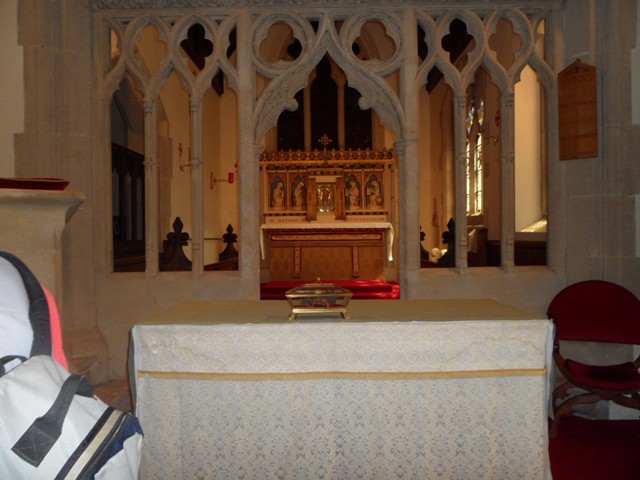According to some stories the hand of Saint James somehow became separated from his body and in 640 was being stored by the Bishop of Torcello of Venice before being a part of the collection of the German Imperial chapel in 1072.
In 1133 it was given to Reading Abbey’s founder by Henry I (or possibly the daughter of Henry I Matilda who was the widow of Henry V Emperor of Germany [Emperor Frederick Barbarossa did ask for the hand’s return but was politely refused and sent many gifts in return]). The hand is why the symbol of Reading Abbey had upon it three scallop shells.

The same Scallop shells appear on many coats of arms associated with Reading including for the University there.
The hand was one of 230 relics at the Abbey and was used in healing ceremonies (and was dipped into the ‘water of Saint James’) and attracted Pilgrims from all over Europe as well as the interest of Royalty with it being taken to Henry II before he went on a difficult oversees campaign and Richard Coeur-de-Lion considering taking it with him on his crusades.
In 1539 came the dissolution of the Monasteries and the hand was hidden in an iron chest before being dug by workmen who were building Reading Gaol in 1786 who gave it to Reading museum. In the 1840s a J Scott Murray bought the hand and put it in his private chapel at Danesford House in Reading and Marlow and on his death he left it to Saint Peter’s Church in Marlow where it is still on display (it made a brief return to Reading for five days for Saint James’ day in 2011 to the Church of Saint James).

The Victoria and Albert museum holds in its collection a reliquary case for the hand
Photograph from http://livingthehistoryelizabethchadwick.blogspot.co.uk/2013/02/todays-research-snippet-empress-matilda.html

Comments
Post a Comment